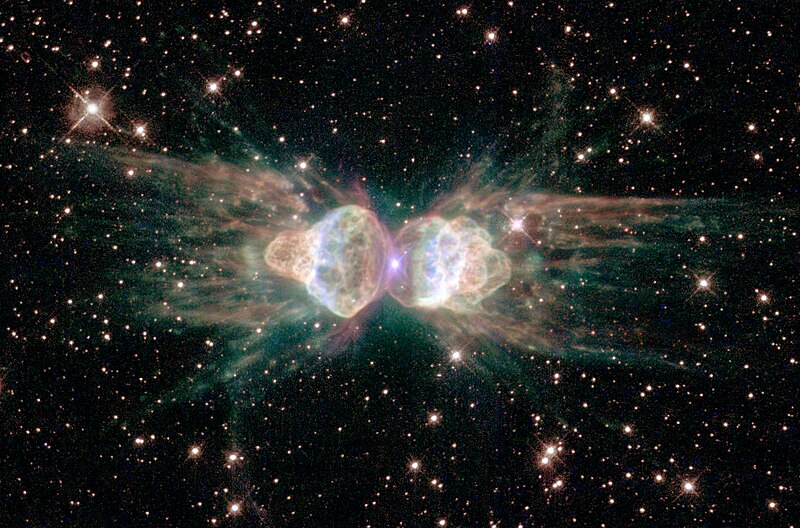檔案:Ant Nebula.jpg

覽幅:寛八〇〇高五二八微格。 他晰:寛三二〇高二一一微格|寛六四〇高四二三微格|寛一〇七二高七〇八微格。
全幅 (微格一〇七二矩七〇八,度:一點一四 MB,多用網際網路副檔名之型:image/jpeg)
檔誌
揀日尋檔。
| 日時 | 縮 | 度 | 用戶 | 註 | |
|---|---|---|---|---|---|
| 今 | 二〇〇八年二月一日 (五) 〇一時〇四分 |  | 一〇七二矩七〇八(一點一四 MB) | Papa November | Full res version from source |
| 二〇〇八年二月一日 (五) 〇一時〇一分 |  | 一〇七二矩七〇八(一四八 KB) | Papa November | Uploaded full resolution image from source | |
| 二〇〇八年一月二九日 (二) 一四時三〇分 |  | 六〇〇矩三六二(六九 KB) | Nk | {{Information |Description=The Ant planetary nebula (Menzel 3 or Mz 3). STScI-PRC2001-05 This NASA/ESA Hubble Space Telescope image reveals the ant's body as a pair of fiery lobes protruding from a dying, Sun-like star. Though approaching the violence o |
檔所繫者
下頁連本檔:
總文之用
下他共筆連本檔:
- af.wikipedia.org上之用
- an.wikipedia.org上之用
- ar.wikipedia.org上之用
- ar.wikiversity.org上之用
- arz.wikipedia.org上之用
- ast.wikipedia.org上之用
- ba.wikipedia.org上之用
- bg.wikipedia.org上之用
- bjn.wikipedia.org上之用
- bn.wikipedia.org上之用
- br.wikipedia.org上之用
- ca.wikipedia.org上之用
- cbk-zam.wikipedia.org上之用
- ce.wikipedia.org上之用
- cs.wikipedia.org上之用
- de.wikipedia.org上之用
- en.wikipedia.org上之用
- Astronomy
- Norma (constellation)
- Talk:Outline of physical science
- Mz 3
- List of planetary nebulae
- Portal:Astronomy/Picture/May 2005
- Portal:Astronomy/Picture/August 2005
- Portal:Astronomy/Picture/17 May 2005
- Portal:Astronomy/Picture/10 August 2005
- Portal:Astronomy/Picture/Week 01 2006
- User:King Zebu
- User:Exoplanetaryscience/sandbox
- en.wikinews.org上之用
- en.wikiversity.org上之用
檢視此檔案的更多全域使用狀況。

